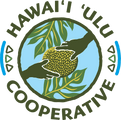Every Meal a Lesson: Kamehameha Schools’ Approach to Food, Identity, and Resilience
On campuses across Hawai‘i, lunchtime presents an opportunity beyond a simple meal: when done with intention, it can help foster a deep connection between food, culture, and ʻāina. At Kamehameha Schools, food service across their cafeterias is a thoughtful extension of the classroom, designed to cultivate identity, resilience, and wellness.
“At Kamehameha Schools, our approach to food service is deeply rooted in our mission to cultivate a thriving lāhui,” says Leanne Kami, strategy consultant in Sustainable Industries Development. “We view our dining halls not just as places to eat, but as extensions of the classroom—spaces where students can engage with ʻike Hawai‘i, sustainability, and wellness through the meals they enjoy.”
Working in partnership with Flik Dining Services, the institution emphasizes values that reach far beyond nutrition. “We see food as more than just fuel—it’s a way to connect our haumāna to culture, community, and ʻāina,” Kami explains. “That means we prioritize locally grown, culturally relevant ingredients, and we design menus that reflect both nutritional excellence and Hawaiian values.”

One of the most meaningful ways these values come to life is through the integration of canoe crops like ʻulu and kalo. In collaboration with Hawai‘i ʻUlu Cooperative, Kamehameha Schools has been bringing these foods back to student dining tables since the co-op’s early days.
“Honestly, it was a natural fit. Our partnership with Hawai‘i ʻUlu Co-op began with its inception in 2016, and grew out of a shared mission—to revitalize traditional Hawaiian crops and strengthen Hawai‘i’s local food systems,” Kami shares. “ʻUlu is not only highly nutritious but also deeply rooted in our cultural heritage. We’ve been using ‘ulu and kalo in dishes like poke and substituting ‘ulu and ‘uala for potatoes in mash and stews, as well as experimenting with dishes like ‘ulu adobo, ‘ulu granola and poi parfaits.”

For students, these dishes are more than tasty alternatives. “It’s familiar, yet new—and it’s helping our students reconnect with indigenous foods in a way that’s both educational and delicious,” says Kami. Each bite offers an opportunity to learn, sparking conversations about traditional food systems and the importance of eating local.
Kamehameha Schools sees this work as essential to building resilience not only for its campuses but for Hawai‘i as a whole. “Partnering with Hawai‘i ʻUlu Co-op is a natural extension of our commitment to building a resilient, self-sustaining Hawai‘i,” Kami explains. “It’s one thing to teach our haumāna about sustainability and food sovereignty—it’s another to show them what that looks like on their lunch tray and encourage that ʻono for traditional foods.”
The impact, she emphasizes, extends far beyond the schools. “By sourcing from the Co-op, we’re supporting local farmers across the pae ʻāina, helping to strengthen rural economies and keep dollars circulating in our communities. We’re also helping to normalize traditional crops like ʻulu in institutional settings, which is key to long-term change and increasing demand.”

Ultimately, the vision is one of empowerment. “We hope our students see this as a model for how to build a resilient Hawai‘i—one where we grow what we eat, honor our ‘ike kūpuna, and invest in the health of our people and our ʻāina,” Kami says. “We want our students to see themselves as stewards of Hawai‘i’s future—individuals who understand the importance of local food systems and are empowered to contribute to their growth.”
In classrooms, in gardens, and at the dining table, Kamehameha Schools is showing what it means to cultivate a thriving lāhui… where every meal is a lesson in history, health, and hope.
Moving forward, we're excited about and deeply grateful for our partnership with Kamehameha Schools and their Hānai ʻAi series, which continues to uplift local farmers and showcase the versatility of Hawaiʻi-grown staple crops for their students, faculty, and staff.

